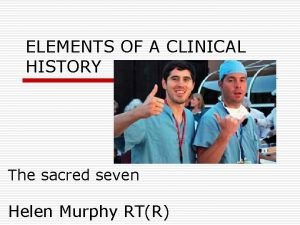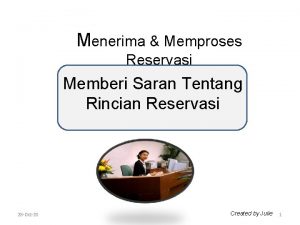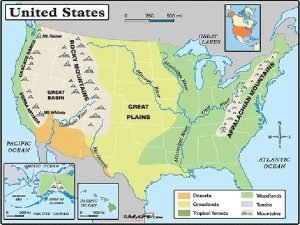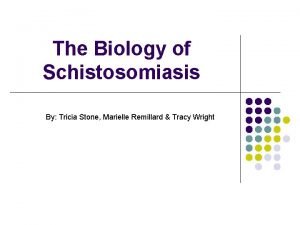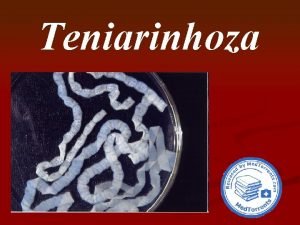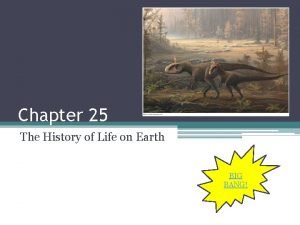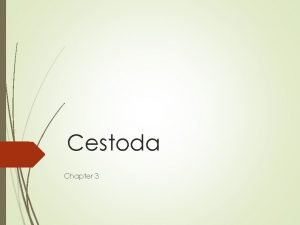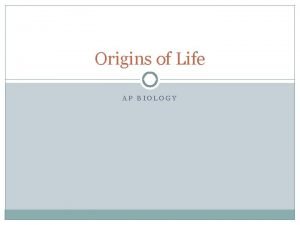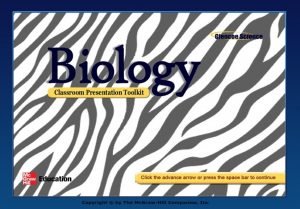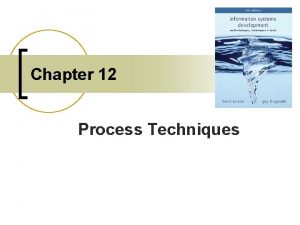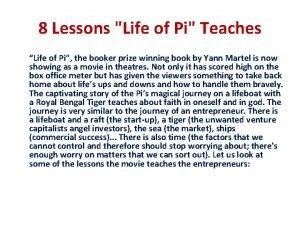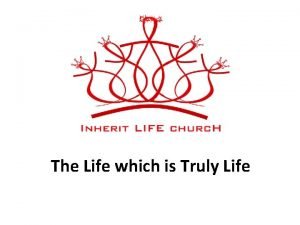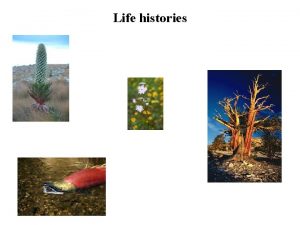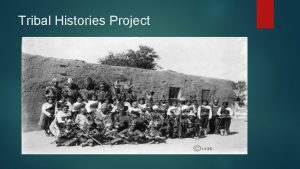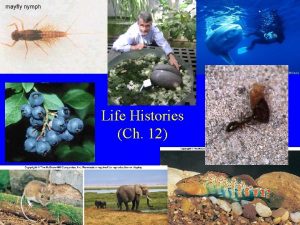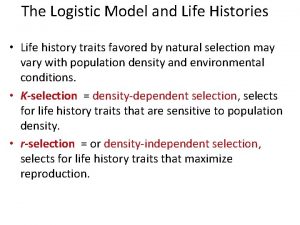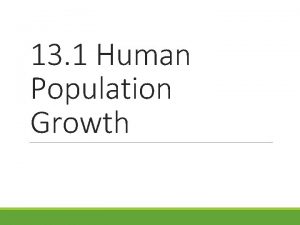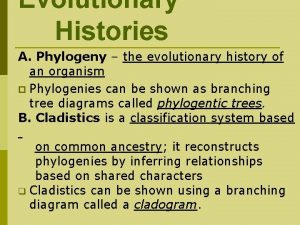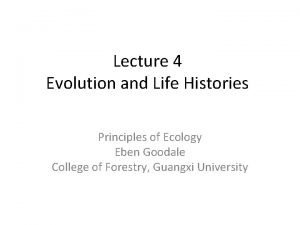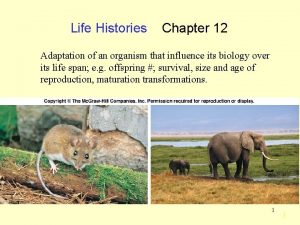Life Histories I What is a Life History










![“Costs” of Reproduction [Source: Miles et al. 2000, Evolution 54: 1386 -1395] “Costs” of Reproduction [Source: Miles et al. 2000, Evolution 54: 1386 -1395]](https://slidetodoc.com/presentation_image/e52e8f57bb41b18350ac55325cd1e1c9/image-11.jpg)








![Thermal Cline in Size [Source: Angilletta et al. , in review for American Naturalist] Thermal Cline in Size [Source: Angilletta et al. , in review for American Naturalist]](https://slidetodoc.com/presentation_image/e52e8f57bb41b18350ac55325cd1e1c9/image-20.jpg)
![[Source: Angilletta et al. 2002, Journal of Thermal Biology 27: 199 -204] [Source: Angilletta et al. 2002, Journal of Thermal Biology 27: 199 -204]](https://slidetodoc.com/presentation_image/e52e8f57bb41b18350ac55325cd1e1c9/image-21.jpg)






















- Slides: 43

Life Histories I. What is a Life History? II. Growth and Reproduction III. Offspring Size and Number

Life History Traits x = age at maturity lx = survival to age x mx = fecundity to age x • • • Age at Maturity Size at Maturity Number of Offspring Size of Offspring Frequency of Reproduction

Phrynosomatid lizards are excellent models for studies of life-history variation. • >100 species occurring in North & Central America • Occur at elevations from sea level to 4000 m • Size ranges from 4 to >30 g

Life Histories of Lizards 1. Early reproduction, large clutches, multiple clutches per year 2. Early Reproduction, small clutches, multiple clutches per year 3. Delayed reproduction, large clutches, single clutch per year 4. Delayed reproduction, viviparous, single brood per year Donald W. Tinkle University of Michigan

Life Histories of Lizards 1. Early reproduction, large clutches, multiple clutches per year 2. Early Reproduction, small clutches, multiple clutches per year 3. Delayed reproduction, large clutches, single clutch per year 4. Delayed reproduction, viviparous, single brood per year Donald W. Tinkle University of Michigan

The Life History of a Small Lizard Circles = eggs, Boxes = reproductive events

Life History Problems • When should I reproduce? • How much should I reproduce?

“Costs” of Reproduction • Physiological – Energy spent on gametes and offspring – Less room for food in body cavity • Behavioral – – Less opportunity to forage Compromise in thermoregulation Increased exposure to predators Decreased locomotor performance

Survival Costs of Reproduction • Surgically removed follicles to reduce the number of eggs that a female produces • Females in the folliclereduction group suffered less mortality and grew faster than females in the control group Tree Lizard (Urosaurus ornatus) [Source: Landwer 1994, Oecologia 100: 243 -249]

“Costs” of Reproduction Burden Endurance Survival [Source: Miles et al. 2000, Evolution 54: 1386 -1395]
![Costs of Reproduction Source Miles et al 2000 Evolution 54 1386 1395 “Costs” of Reproduction [Source: Miles et al. 2000, Evolution 54: 1386 -1395]](https://slidetodoc.com/presentation_image/e52e8f57bb41b18350ac55325cd1e1c9/image-11.jpg)
“Costs” of Reproduction [Source: Miles et al. 2000, Evolution 54: 1386 -1395]

“Costs” of Reproduction Burden Endurance Survival The survival of manipulated females (86%) was higher than the survival of control females (62%). [Source: Miles et al. 2000, Evolution 54: 1386 -1395]

When should a lizard reproduce? Benefits of earlier maturity Higher survival to maturity Shorter generations Benefits of later maturity Higher fecundity through longer growth Higher offspring success through experience [Source: Stearns 1992, The Evolution of Life Histories, Oxford University Press]

The Life History of a Small Lizard Circles = eggs, Boxes = reproductive events

Predictions of Theory If the rate of mortality increases, age at maturity should decrease and the effort invested in reproduction should increase. Thus, theory predicts that early maturation at a small size will be associated with low survival of juveniles. [Source: Charlesworth 1980, Evolution in Age-structured Populations, Cambridge University Press]

Thermal Clines in Body Size 2 Body size 1 Environmental temperature 3

Sceloporus graciosus Sceloporus jarrovi Sceloporus merriami Sceloporus occidentalis Sceloporus undulatus

Study Sites NJ NE UT KS WCO MO OH ECO AZ NM 1 SC NM 2 TX 1000 KM MS AL GA

hyacinthinus garmani tedbrowni cowlesi consobrinus Subspecies of Sceloporus undulatus tristichus
![Thermal Cline in Size Source Angilletta et al in review for American Naturalist Thermal Cline in Size [Source: Angilletta et al. , in review for American Naturalist]](https://slidetodoc.com/presentation_image/e52e8f57bb41b18350ac55325cd1e1c9/image-20.jpg)
Thermal Cline in Size [Source: Angilletta et al. , in review for American Naturalist]
![Source Angilletta et al 2002 Journal of Thermal Biology 27 199 204 [Source: Angilletta et al. 2002, Journal of Thermal Biology 27: 199 -204]](https://slidetodoc.com/presentation_image/e52e8f57bb41b18350ac55325cd1e1c9/image-21.jpg)
[Source: Angilletta et al. 2002, Journal of Thermal Biology 27: 199 -204]

Low mortality favors delayed maturation. [Source: Angilletta et al. , in review for American Naturalist]

Sceloporus graciosus Sceloporus jarrovi Sceloporus merriami Sceloporus occidentalis Sceloporus undulatus

The Sagebrush Lizard (Sceloporus graciosus)

Thermal Cline in Size Cooler environment Warmer environment [Source: Sears & Angilletta, in review for Integr. Comp. Biol. ]

GCK FPK Site CCC Elev (m) Clear Creek Canyon 1752 Firepit Knoll 1961 Goose Creek Knoll 2255

Lizards at high elevation grow faster not longer.

S. graciosus S. undulatus Survival high Overview of Life Histories Survival Thermal opportunity low Growth rate high low Elevation Growth rate high low Latitude

Causes of Size Clines • Theory predicts delayed maturation and large size in environments where survival of juveniles is high. • Sceloporus undulatus is larger in colder environments because high survival of juveniles favors delayed maturation. • Sceloporus graciosus is larger in colder environments because low survival of small juveniles favors rapid growth.

Life History Problems • When should I reproduce? • How much should I reproduce?

Fitness of offspring Optimal Offspring Size of offspring [Source: Smith & Fretwell 1974, American Naturalist 108: 499 -506]

Experimental manipulation of clutch size reveals a tradeoff. CA CA WA (manipulated) [Source: Sinervo 1999, American Naturalist 154: S 26 -S 42]

Variation in Egg Size • Egg size varies greatly within and among species • Many factors can account for variation: – Environmental temperature – Resource availability – Constraints (physiological or morphological)

Bigger eggs in Colder Environments

Variation in Female Size Indiana New Jersey FL IN Virginia South Carolina Florida Oklahoma

Variation in Egg Size NJ SC Virginia New Jersey Indiana South Carolina Florida Oklahoma

Morphological Constraints Photo by: Wendy Hodges http: //www. digimorph. org/specimens/Phrynosoma_cornutum/whole/

Size of the egg is constrained by size of the pelvis. Photo by: Wendy Hodges http: //www. digimorph. org/specimens/Phrynosoma_cornutum/whole/

Large eggs may not fit through the pelvis. Photo by: Wendy Hodges http: //www. digimorph. org/specimens/Phrynosoma_cornutum/whole/

Can females compensate for smaller eggs?

Egg Mass Calories per gram of egg

Causes of Egg Size. Clines • Theory predicts that egg size should be altered according to environments conditions, but females should make eggs of a constant size. • In Sceloporus undulatus, the size and composition of eggs varies among populations in different environments. • Both adaptive and non-adaptive explanations account for this variation in eggs size.

Todd Steury Chris Oufiero Art Dunham Adam Leaché Peter Niewiarowski Mike Sears
 Biographical research design
Biographical research design Sacred 7 anamnesis
Sacred 7 anamnesis Menerima dan memproses reservasi
Menerima dan memproses reservasi Bryce pederson
Bryce pederson Horrible histories jamestown
Horrible histories jamestown North america, family histories, 1500-2000
North america, family histories, 1500-2000 History also history physical
History also history physical Prophet muhammad lineage
Prophet muhammad lineage History of software development life cycle
History of software development life cycle Define dystopian society
Define dystopian society Schistosomes
Schistosomes Taenia saginata phylum
Taenia saginata phylum Equilibrial life history
Equilibrial life history Discovery education
Discovery education Hymenolepis diminuta egg
Hymenolepis diminuta egg Iteration control structures
Iteration control structures Aerobic bacteria
Aerobic bacteria Section 17-4 patterns of evolution
Section 17-4 patterns of evolution Life history
Life history The history of life section 1 fossil evidence of change
The history of life section 1 fossil evidence of change The history of life on earth
The history of life on earth Profile of mahatma gandhi in english
Profile of mahatma gandhi in english Genres and subgenres
Genres and subgenres Entity life history
Entity life history City life and country life paragraph
City life and country life paragraph Farm life vs city life
Farm life vs city life Where do we use polynomials in our daily life
Where do we use polynomials in our daily life Married life vs single life
Married life vs single life Life orientation skills
Life orientation skills Country life vs city life compare /contrast
Country life vs city life compare /contrast City life vs country life
City life vs country life Lesson in life of pi
Lesson in life of pi Boundaries meme
Boundaries meme Life that is truly life
Life that is truly life The idea life comes from life is
The idea life comes from life is Freetutorical.com harvest land
Freetutorical.com harvest land Leq essay example
Leq essay example Total war world history definition
Total war world history definition Chapter 17 section 3 world history
Chapter 17 section 3 world history World history spring final exam review answers
World history spring final exam review answers Ap world history jeopardy
Ap world history jeopardy Chapter 32 assessment world history
Chapter 32 assessment world history Chapter 30 section 2 world history
Chapter 30 section 2 world history Chapter 15 section 1 world history
Chapter 15 section 1 world history

